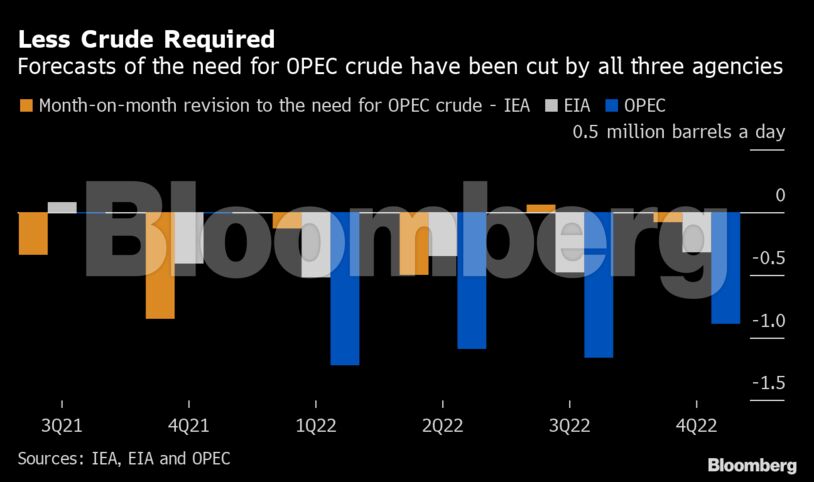By Julian Lee

The Paris-based IEA and OPEC both see stronger growth in non-OPEC supply than they did a month ago. But much of that is simply a reflection of the supply deal reached by OPEC+ producers on July 18, shortly after that month’s forecasts had been published. That agreement will see the group’s overall output target lifted by 400,000 barrels a day each month until all of the crude removed from the market in 2020 has been restored — a process that should last until September 2022, if there are no further changes.
Of that monthly increase, almost 150,000 barrels a day should come from the group’s non-OPEC members, with more than 100,000 barrels a day coming from Russia alone. Because the country was given an unrealistically high starting point of 11 million barrels a day for its output cuts last year, the planned increases would take Russian production to new highs in 2022, levels that it may struggle to reach. Should it, or any of the other non-OPEC members of the OPEC+ group, be unable to reach their rising output targets, the shortfall would show up as a higher call on the group’s OPEC members.

But rising non-OPEC output may not be the only issue with which OPEC producers will have to contend in the coming months.
According to the IEA, oil demand growth is now looking slower than it did a month ago, compounding the effect of higher non-OPEC supply to squeeze OPEC producers even harder. Global oil demand “abruptly reversed course” last month, falling slightly after surging by 3.8 million barrels a day in June, the IEA said.
The rapid spread of the Covid-19 delta variant is seen by the IEA as undermining oil demand growth over the remainder of 2021, with renewed restrictions on movement hitting fuel consumption. The agency has cut its global oil demand forecast for the second half of the year by 550,000 barrels a day from the level it foresaw just a month ago.

That pessimism isn’t yet shared by everybody, though. The EIA made only a small downward revision to its fourth quarter demand forecast, cutting it by a modest 90,000 barrels a day, while OPEC has left its demand outlook for the rest of the year virtually unchanged from last month.
With Brent crude trading close to $71 a barrel, down by about 7% this month, and forecasts from both producer and consumer groups suggesting that the need for its oil may be smaller than previously thought, OPEC is unlikely to deliver the additional barrels that President Biden’s administration has requested.
These latest outlooks will strengthen OPEC’s view that “vigilance and determined efforts” by the OPEC countries “will remain ever more important.”
Share This:




 CDN NEWS |
CDN NEWS |  US NEWS
US NEWS 





























